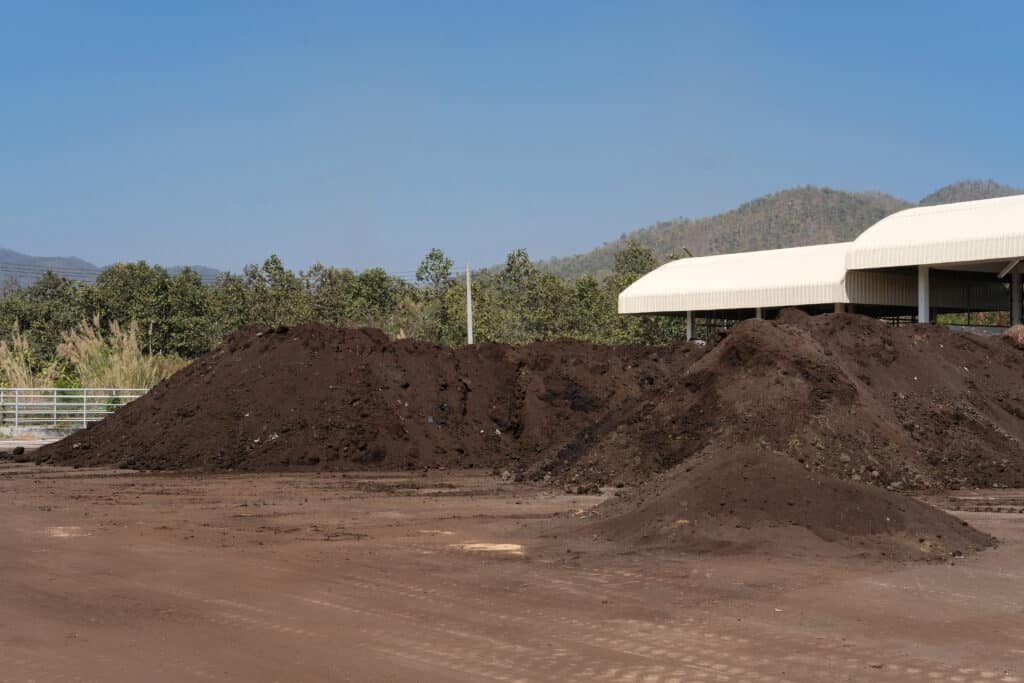Curious about composting? Details, options, and how to get started!
Have you heard the latest buzz about composting?
In recent years, the practice of separating food scraps, yard trimmings, and other organic materials and allowing them to break down naturally – instead of throwing them in the garbage – has become widely recognized as an effective way to improve soil health, reduce waste, and curb potent greenhouse gas emissions from landfills.
In some areas, composting has already become a part of everyday life. Cities like San Francisco, California, and Portland, Oregon, already have compost collection programs that involve residents in this important – but often overlooked – form of recycling. As of July 1, 2020, Vermont became the first state to implement a mandatory composting law to prevent food scraps from entering landfills.
But in most parts of the U.S., the decision to participate in composting remains up to each individual.
Thankfully, there are many different ways to get started with composting!
Luckily, we have lots of options when it comes to composting. And no matter which method is used, all composting methods accomplish the same main goal: keeping food scraps and other organics out of landfills so they can be returned to the environment and used by new life to grow.

In areas where state or city-wide composting programs are not already in place, composting options generally fall into three main categories:
- Having food scraps and other compostables collected by a curbside pickup service
- Dropping off organic waste materials for composting at a local farm, community composting site, or even a nearby home or farm that accepts organics donations
- Composting your food scraps and organics at home
Options for recycling food scraps and other organic waste can depend greatly on where you live. While city dwellers might not have enough space to compost at home, they might have the option to use a curbside collection service or drop off their food scraps at a nearby community composting site. On the other hand, for people living in rural and suburban areas, composting on-site (home composting) is often the best – and sometimes the only – option.
Curbside Compost Pickup Services
Curbside composting services collect food scraps and other compostables from homes, businesses, and other locations and take them to farms and other large-scale composting facilities. These services have been expanding over the last several years in response to the growing awareness about the important role composting can play in sustainable living. Many of these compost collection companies also offer their customers the option to receive shares of finished compost to use in their gardens. As an alternative, compost collection customers often can donate their compost to local farms.
Where available, compost pickup services can be a great option for those who don’t have the space to compost at home or would prefer the convenience of having food scraps and other organics collected from their home on a regular schedule.
Wondering if you have a compost collection service available in your area?
CompostNow’s map and directory is a great resource for finding curbside composting services across the U.S. and Canada.
Watch this great video featuring Garbage to Garden, a curbside compost company in Portland, Maine, to learn more about how these services work: (3:22 min)
Community composting/Drop-off composting
Depending on where you live, you might have the option to participate in a community composting program. Often associated with local farms and gardens, these programs typically accept food scraps from community members via drop-off.
Interested in finding out if there are community composting opportunities in your area?
The Where to Compost Guide on Litterless.com includes both pickup services as well as several drop-off listings by state and city. (U.S. only)
ShareWaste is another great tool for helping people find nearby places to drop off food scraps and other organics for composting. Farms and individuals who need more compostable waste can sign up to become drop-off locations, too!
Home Composting
When it comes to home composting, there are several different ways to go about it! Here are some of the most common DIY composting methods used today:
Above-ground compost bin or tumbler
Compost bins and tumblers are popular for those with some yard space (or even just a patio!) who want a compact, easy-to-install system. These systems don’t typically require much maintenance other than the occasional turning or stirring for aeration. The finished compost becomes an excellent fertilizer for gardens and flower beds!
Eco-Tip: As an extra eco-friendly feature, consider compost bins and tumblers made from recycled plastic.
In-ground compost system
These systems are installed partially underground, often within or adjacent to a vegetable or flower garden. Subpod is a popular underground worm farm and composting system that comes in various sizes. This company even offers a mobile system for balconies, decks, and patios. In addition to buying a pre-built system, there are also ways to make DIY in-ground composting systems using just a few basic materials.
The simple compost heap
Creating a simple compost heap can be a great solution when space and aesthetics aren’t an issue. This method involves letting nature work its magic… no special equipment is required! All you need to do is pile dried leaves, fruit and vegetable scraps, and other organics in layers in a designated spot and watch the magic begin! Aside from the occasional turning to increase airflow, everything breaks down naturally over time.
Note: Since compost heaps are out in the open, they can attract small visitors – so it’s best to set these up in a spot where this won’t be an issue.
Trench composting
Also known as the dig-and-drop method, trench composting works just as its name suggests. It involves digging holes or trenches, adding food scraps and other organics, and burying them with soil. There are several different methods of trench composting, and lots of helpful details can be found online. Trench composting requires no initial setup or costly equipment and is ideal for larger yard spaces and gardens!
Vermicomposting
Vermicomposting uses specific types of earthworms to decompose organic materials into super-nutrient-rich material called vermicompost. Often used indoors when outdoor composting isn’t possible, vermicomposting can also work outside in shady locations. This method may sound unconventional for those newer to the composting world. But, for many, starting a worm farm and feeding it food scraps can become a fascinating and fun hobby!
Solar Food Waste Digester
Backyard solar digesters like The Green Cone can be another great option for recycling organic waste at home. It’s important to note that solar digesters are unlike other composting methods, and because of their design, they can break down many types of organics that don’t typically go in regular compost bins and tumblers. This can include dairy, meat, bones, and even pet waste. Because of their limited size, they can only handle a certain amount of material daily – and can’t be used for yard trimmings. Read more about The Green Cone here.
Want to learn more about composting?
Check out the All About Composting: Videos & Resources page at Going Greener Today.
Check out these other posts:
The quick start guide to Going Greener: Shrink your footprint today!
Skip single-use on the go: Bring these reusables along with you!
Explore and Learn More:
Composting in America | U.S. PIRG & Frontier Group
Composting | U.S. Environmental Protection Agency
Compost Resources | Compost Research & Education Foundation





